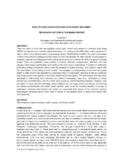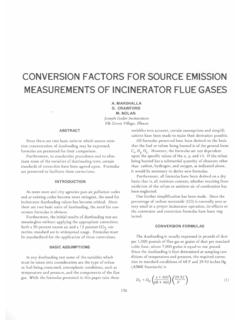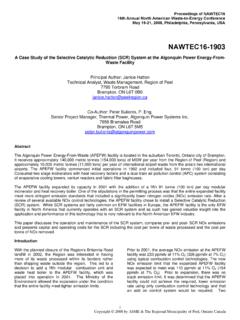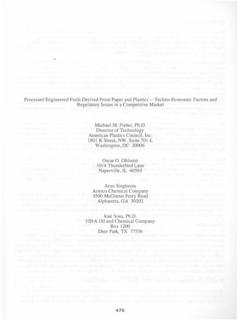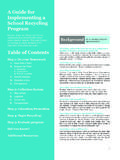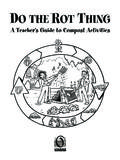Transcription of Open dumping of solid wastes in India - Columbia University
1 Open dumping of solid wastes in India Page | 2 Sustainable solid Waste Management in India by Ranjith Kharvel Annepu Advisor: Nickolas J. Themelis Stanley-Thompson Professor Emeritus Submitted in partial fulfillment of the requirements for the degree of Master of Science in Earth Resources Engineering Department of Earth and Environmental Engineering Fu Foundation School of Engineering and Applied Science Columbia University in the City of New York January 10, 2012 Sponsored by the Waste-to-Energy Research and Technology Council (WTERT) Page | 3 EX EC UT I VE SUMMARY This study examined the present status of waste management in India , its effects on public health and the environment, and the prospects of introducing improved means of disposing municipal solid waste (MSW) in India . The systems and techniques discussed are Informal and Formal Recycling, Aerobic composting and Mechanical Biological Treatment, Small Scale Biomethanation, Refuse Derived Fuel (RDF), Waste-to-Energy Combustion (WTE), and Landfill Mining (or Bioremediation).
2 This report is the result of over two years of research and includes data collected from the literature, communication with professionals in India , US and Europe; and extensive field investigations by the author in India and the US. Two field visits in India over a period of fifteen weeks covered 13 cities (Figure 1) representing all sizes and regions in India . The visits included travelling to informal recycling hubs, waste dealers shops, composting facilities, RDF facilities, WTE facilities, sanitary and unsanitary landfills, landfill mining sites, and numerous municipal offices. These visits provided the opportunity to closely observe the impact of waste management initiatives, or lack thereof, on the public in those cities. The author has also visited different WTE plants in the US to study the prospects of this technology in India .
3 The main objective of the study was to find ways in which the enormous quantity of solid wastes currently disposed off on land can be reduced by recovering materials and energy from wastes , in a cost effective and environmental friendly manner. The guiding principle of this study is that responsible management of wastes must be based on science and best available technology and not on ideology and economics that exclude environmental costs and seem to be inexpensive now, but can be very costly in the future (Annexure I). Lack of data and inconsistency in existing data is a major hurdle while studying developing nations. This report attempted to fill this gap by tabulating the per capita waste generation rates and wastes generated in 366 Indian cities that in total represent 70% of India s urban population (Appendix 1).
4 This is the largest existing database for waste generation in individual cities in India . Estimations made by extrapolating this data puts the total MSW generated in urban India at million tons per year (TPY) or 188,500 tons per day (TPD). The data collected indicate a 50% increase in MSW generated within a decade since 2001. In a business as usual scenario , urban India will generate million TPY (440,000 TPD) by 2041 (Table 7); in the next decade, urban India will generate a total of 920 million tons of municipal solid waste that needs to be properly managed in order to avoid further deterioration of public health, air, water and land resources, and the quality of life in Indian cities. In a business as usual scenario, India will not be able to dispose these wastes properly. Page | 4 The composition of urban MSW in India is 51% organics, recyclables (paper, plastic, metal, and glass) and 31 % of inerts (Table 6).
5 The moisture content of urban MSW is 47% and the average calorific value is MJ/kg (1745 kcal/kg). The composition of MSW in the North, East, South and Western regions of the country varied between 50-57% of organics, 16-19% of recyclables, 28-31% of inerts and 45-51% of moisture (Table 6). The calorific value of the waste varied between MJ/kg (1,620-2,340 kcal/kg). Map of India Cities Generating MSW > 1000 TPD Cities Visited During Research Trip Figure 1, Map of Cities Generating Different Quantities of MSW; Cities Visited by the Author during Research Visits Page | 5 This report has also updated the Status of Cities and State Capitals in Implementation of MSW (Management and Handling) Rules, 2000 (1), jointly published by the Central Pollution Control Board (CPCB) and the National Environmental Engineering Research Institute (NEERI), with respect to waste disposal options.
6 The updated information is included as a table comparing the waste handling techniques in 2008 and 2011 (Table 9, also see Appendix 3). Since 2008, the number of composting facilities in the 74 cities studied (Appendix 3) increased from 22 to 40. Currently, India has more than 80 composting plants (Appendix 8). During the same period, the number of sanitary landfills (SLF) has increased from 1 to 8 while the number of RDF and WTE projects has increased from 1 to 7 (Appendix 3). The study also found that open burning of solid wastes and landfill fires emit nearly 22,000 tons per year of pollutants into the air in the city of Mumbai alone (Figure 15). These pollutants include Carbon Monoxide (CO), Hydrocarbons (HC), Particulate Matter (PM), Nitrogen Oxides (NOx) and Sulfur Dioxide (SO2) plus an estimated 10,000 TEQ grams of dioxins/furans (Appendix 14).
7 Open burning was found to be the largest polluter in Mumbai, among the activities that do not contribute any economic value to the city. Since open burning happens at ground level, the resultant emissions enter the lower level breathing zone of the atmosphere, increasing direct exposure to humans. The author has observed that the role of the informal sector in SWM in developing nations is increasingly being recognized. There is a world-wide consensus that the informal sector should be integrated into the formal system and there are numerous initiatives working with such goals. This report estimates that, every ton per day of recyclables collected informally saves the urban local body USD 500 (INR 24,500) per year and avoids the emission of 721 kg of carbon dioxide per year (Appendix 11). There is no sufficient information on the performance of India s MSW composting facilities.
8 However, an important observation made during this study is that the compost yield from mixed waste composting facilities (MBTs) is only 6-7% of the feed material. Up to 60% of the input waste is discarded as composting rejects and landfilled (Figure 28); the rest consists of water vapor and carbon dioxide generated during the composting processes. The compost product from mixed wastes was found to be of very low quality and contaminated by heavy metals (Figure 30). The majority of the mixed waste compost samples fell below the quality control standards for total potassium, total organic carbon, total phosphorus and moisture content; and exceeded the quality control limits for heavy metals (lead, Pb, and chromium, Cr). If all MSW generated in India in the next decade were to be composted as mixed waste and used for agriculture, it would introduce 73,000 tons of heavy metals into agricultural soils (Appendix 13).
9 Page | 6 This study also found that the calorific value (lower heating value) of some composting rejects (up to 60% of the input MSW) is as high as MJ/kg (2,770 kcal/kg) (Table 14). This value is much higher than the minimum calorific value of MJ/kg (1,790 kcal/kg) recommended for economically feasible energy generation through grate combustion WTE (2). This data is important, considering the notion that the calorific value of MSW in India is not suitable for energy generation. Therefore, the residues of mixed MSW composting operations can be used for producing RDF or can be combusted in a WTE plant directly. Landfill gas (LFG) recovery has been shown to be economically feasible at seven landfills located in four cities, Delhi, Mumbai, Kolkata and Ahmadabad (Table 10). Development of these seven LFG recovery projects will result in an overall GHG emissions reduction of million tons of CO2 equivalents.
10 One of these landfills, the Gorai dumpsite in Mumbai, has already been capped in 2008 for capturing and flaring LFG. This project will result in an overall GHG emissions reduction of million tons of CO2 equivalents by 2028. Assuming a business as usual scenario (BAU), by the end of the next decade, India will generate a total of 920 million tons of MSW, landfill or openly dump 840 million tons of it and produce million tons of mixed waste compost. It will also produce million TPY of potential refuse derived fuel (RDF) in the form of composting rejects that will also be landfilled. A review of the present status of SWM in India , from a materials and energy recovery perspective, showed that in 2011 India will landfill (Appendix 15) million TPY of recyclable material which could have been used as secondary raw materials in manufacturing industries, due to the absence of source separation; million tons of compost which could have been used as a fertilizer supplement, due to the absence of source separation and enough composting facilities; and 58 million barrels of oil energy equivalent in residues of composting operations that could have been used to generate electricity and displace fossil fuels in RDF co-combustion plants or WTE power plants.
